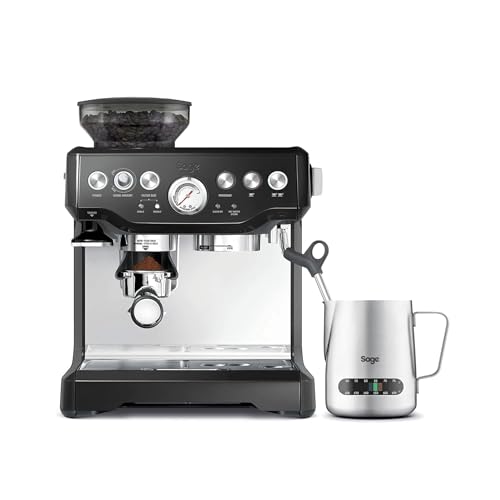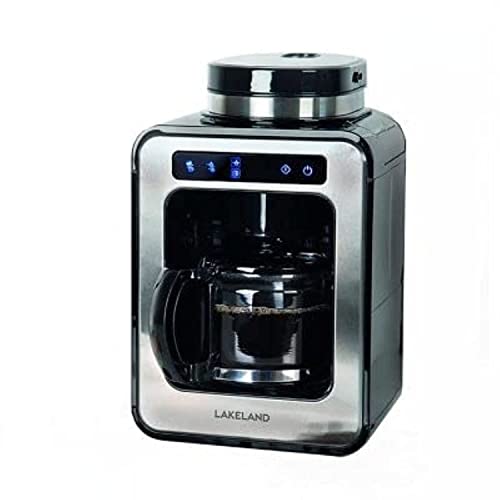This Most Common Bean Coffee Machine Debate Isn't As Black Or White As…
페이지 정보

본문
 Coffee Bean Coffee Machines
Coffee Bean Coffee MachinesWith a coffee bean maker allows you to enjoy delicious, fresh whole-bean espresso that is made according to your specifications. The machine grinds the beans coffee machine, measures them, tamps and forces hot water through the ground to create delicious, flavorful coffee.
These machines have many advantages such as ease of use and a reduction in environmental waste when compared to pod machines. The machine is fully automated and can be operated at the touch of one button.
Here are a few alternatives to the word "grind"
The kind of grind you choose is vital to making a great cup of coffee. The size, form and consistency are all crucial. Incorrectly grinding beans can cause the water to move too quickly through the grind which can result in a lack of flavor or excessive extraction of bitterness.
A good grinder will have a range of grind sizes to offer you a variety of different brew methods. It's important to experiment with different sizes of grinding, as they can significantly alter the flavor of your beverage. The smallest grind sizes are ideal for espresso and French press, whereas larger, coarser particles will be Best coffee beans for bean to cup machines for immersion brewing like the Chemex or Moka pot.
Try roasting your beans, then grinding them before brewing to get a gourmet cup of coffee. This will increase the flavor and aroma of your brew and will help you make a perfect cup every time. To preserve the freshness and flavor of the beans, keep them in a sealed airtight container in a cool, dark place.
Bean to cup commercial machines provide unparalleled convenience. They allow you to enjoy barista-quality coffee with the click of a button. These machines take care of everything from preparing the beans to tamping, making them a great choice for busy cafes and offices.
The first step is grinding your beans to a specific size. They can be configured to match your preferred brew method and are able to be programmed to disperse the desired quantity of cups at once. Some automatically tamp the grounds to form a perfectly compacted ball of coffee, ensuring the most consistent extraction.
A bean-to-cup machine usually has large hoppers for you to fill with whole beans. The machine will automatically grind and dispensing the right amount of the beverage you select. The display on these machines will show the quantity of beans and the size of the grind that you select. It will also show the total number drinks that the machine is preparing.
Extraction
When a coffee is ground, it is broken into smaller pieces, referred to as particles. The size of these particles can be a significant factor in the way that coffee is extracted and, consequently, how great the finished cup will taste. In a bean-to-cup machine the particle size of the beans is controlled prior making coffee so that it lines up with the extraction method required by the machine. This allows you to get a great cup of coffee every time and doesn't require the expertise of a barista.
The brew time of a machine that is bean to cup can be controlled to achieve precisely the strength you desire to drink. This can be a significant advantage over pod machines, which usually give you less control and could result in weaker or more bitter tasting coffee machine for beans. Bean-to-cup machines allow you to regulate not just the brew-time as well as the water temperature. This lets you decide how strong your coffee will be.
Extraction is a delicate procedure that relies on a balance between the size of the particle dosage, size, and the force that is used to tamp it. A poorly extracted coffee can result from any of these factors. Coffee that is under-extracted will taste sharp and sour and coffee that is over-extracted will taste dry and bitter.
To ensure that your coffee is extracted correctly you must make use of a top-quality grinder and the correct type of beans. Light roasts are generally a bad choice for fully automated or espresso machines, as the quick extraction process may make the coffee dry and lacking in body. Darker roasts with an extremely high Robusta content, like our Jhai (100 percent Robusta) or Tiga Terra are the best for these types of machines because they provide fuller flavors and more robust bodies.
The choice between a pod-based coffee maker and a bean-to-cup machine ultimately comes down to the convenience factor and personal preference. Pod coffee machines are convenient for making coffee and tea. However they aren't as efficient and produce waste when you dispose of used pods.
Dispensing
Whole beans eliminate pods, which can save you money and allowing more flexibility. However this also means that your machine will require more frequent maintenance and best coffee Beans for bean to cup machines cleaning than a pod-based model.
These machines are designed to be low-maintenance, and have many features that make the task easier. For example, most bean-to-cup coffee makers have automatic rinsing and cleaning cycles, making it easy to keep your machine clean without disrupting your day-to-day operations.
 Another convenient feature is the possibility to add steaming hot milk to coffee drinks. This lets your team members adjust their drink to suit their preferences and tastes while increasing productivity. Additionally, it's an excellent way to show your team that you care about their wellbeing. It has been proved scientifically, that coffee can increase the production of dopamine and norepinephrine, which increases concentration and motivation at work.
Another convenient feature is the possibility to add steaming hot milk to coffee drinks. This lets your team members adjust their drink to suit their preferences and tastes while increasing productivity. Additionally, it's an excellent way to show your team that you care about their wellbeing. It has been proved scientifically, that coffee can increase the production of dopamine and norepinephrine, which increases concentration and motivation at work.Some models even offer additional options for beverage customization, like texturizing milk for cappuccinos and lattes. This is a major selling point for baristas who have little time to prepare each cup of coffee.
The size of the water tank as well as the bean hopper size are crucial aspects to look out for when selecting a top-quality bean-to cup coffee maker. The tank determines the length of time the machine can operate before needing a refill, and the size of the hopper determines the frequency you'll need to replenish your beans. Generally, the larger capacity of each, the less frequently you'll have to replenish.
You must carefully consider the kind of beans you'll be using prior to buying a bean-to-cup coffee maker. Different grind sizes can impact the flavor and consistency of each cup. It is also important to check out the machine's programmable options that let you alter your beverages to taste exactly the way you want them to be.
The spouts for dispensing coffee from your coffee machine could become clogged by ground coffee residue or other particles left over after grinding. The spouts should be cleared frequently to prevent slow and inconsistent flow, which could result in insufficient dosing of coffee grounds. This could be caused by too coarse a setting for grinding, overly dry or oily beans or the absence of regular cleaning and cleaning.
Cleaning
Cleaning coffee machines is a vital component of maintaining them. It stops the buildup and accumulation of residues that could negatively affect the taste and quality of the coffee. Regular cleaning helps keep the machine in good condition and reduces the possibility of a malfunction that could result in a large repair bill. Many bean-to cup coffee machines include a routine cleaning cycle that will flush through pipes and clean the brewing unit while others will have a separate, milk side cleaning cycle to ensure that the spouts are cleaned thoroughly.
A good rental supplier will usually train their staff on the complete maintenance and cleaning process during the installation. This will reduce confusion and ensure that steps are correctly followed. Clear instructions and a thorough understanding of the procedure will save you from expensive repairs or poor-quality drinks.
It is recommended to clean the carafe, the permanent filter, and brew basket after every use with hot soapy water or best coffee beans for bean to cup machines in the dishwasher if they are certified safe for this. It is also a good idea to run three or more times of fresh water, without K cups or ground coffee bean coffee machine in the machine between uses. This will help remove any oily residue and will stop the growth of mould, bacteria or yeast.
For single-serve or pod coffee makers, it is a good idea to conduct a thorough clean and descale once every four weeks. This is typically done with a vinegar solution. You can add up to 4 cups of vinegar into the reservoir, and then run the machine for an brewing cycle. After the cycle is completed wash and descale as per the manufacturer's instructions and run a couple of cycles of clean water to eliminate any vinegar odor.
Commercial machines come with a built-in telemetry system which logs every cleaning cycle. You or your provider can view this to ensure that the machine is maintained regularly. This can also alert you to the possibility that any of the moving parts have become stuck or seized which will require more precise maintenance and repair work.
- 이전글Four The reason why You are Nonetheless An Amateur At Where To Buy Military Uniforms 25.02.06
- 다음글Five Killer Quora Answers To Coffee Machine Bean To Cup 25.02.06
댓글목록
등록된 댓글이 없습니다.


